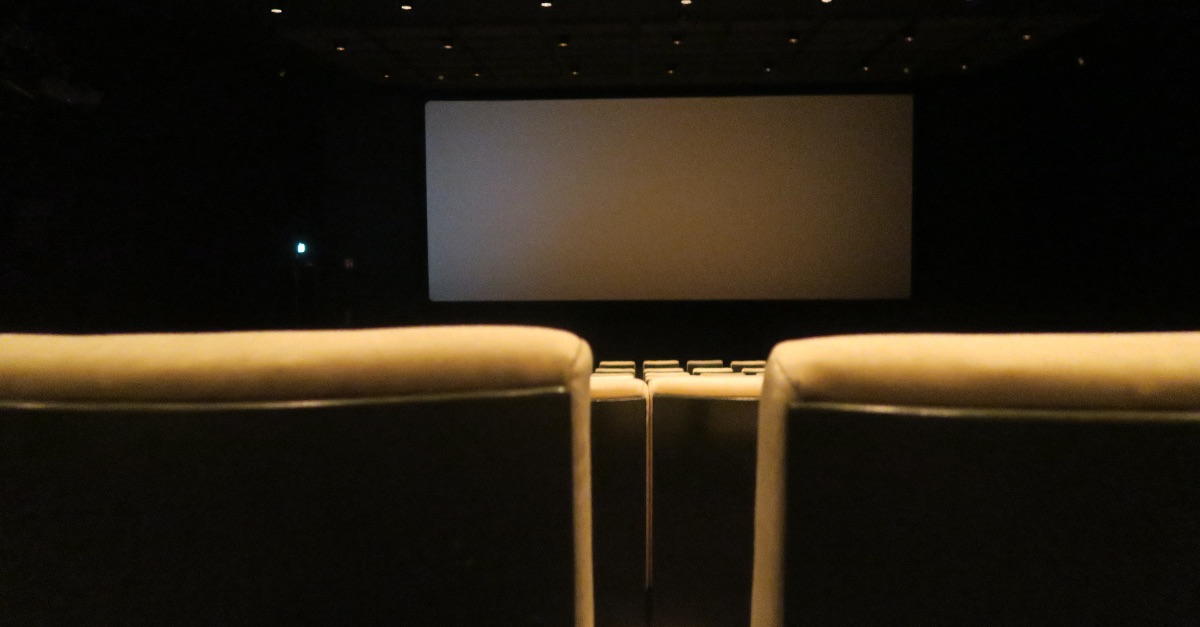The following is a transcript of the video above, edited for readability.
I think a lot of Christians have uncertainty and fear surrounding the creative and artistic aspects of human nature. And in my classes I will often talk about this. Art is very, very powerful and the creative impulse is powerful. In a lot of ways, it's like sex. But both are gifts of God. We need to be careful with them, but we also need to cultivate them rightly. And being made in the image of God, we all have the ability to create, but it is easy because we are creators with a small C to forget that we are underneath a creator with a capital C, so we can imitate God through creativity, through reading, through writing, through music. And it's tempting sometimes because these things come into conflict to choose one over the other.
I think of Vincent van Gogh, for example, a wonderful artist who felt like he had to choose between serving God and serving his art, and he didn't feel like he could do both. And he ended up abandoning God and the church and pursuing his art. And what a tragedy that is for the church. He should have been able to fulfill his vocation as an artist and understand that he could do so in service to the church. It's a difficult tension to navigate, and I think the church needs to cultivate a greater awareness of how to do that. It is not going against God to pursue creative callings and to appreciate art and literature. But we do need to understand the power of those things and to put them into submission of our creator, capital C creator.
There are a lot of messages that the church gives about the arts, not necessarily explicitly, but it seems as though the arts are less important than a lot of other things. And so those of us who are drawn to the arts as I was drawn to literature, sometimes feel like we have to choose between God and art. And so when I was growing up loving books and loving reading things that my youth pastors and fellow youth group members weren't necessarily reading or understanding, I ended up feeling like I had to choose between my love of literature and my love of God. And so for a while I felt like I loved literature more than God, and it took a long time for me to realize that my love of literature was part of how God created me and that I could fulfill that love and that passion in his service.
(Article first published August 6, 2014)
www.liberty.edu
www.christianity.com

10 Books for Christians Learning about the Arts
These books describe how the Bible talks about creativity, how Christianity has regarded the arts at different periods, and how to navigate religious pressures to make certain kinds of art.
1. The Mind of the Maker by Dorothy L. Sayers
Dorothy L. Sayers (author of classic mystery novels like Whose Body? as well as the twentieth century’s most popular Divine Comedy translation) wrote several classic books about Christianity. The Mind of the Maker helps artists understand their work by comparing art to the Trinity. An artwork involves its starting point (Idea), the making of it (Activity), and responses to it (Power). Like the Father, Son, and Holy Spirit, these three elements are each the artwork, yet distinct. Through this analogy, Sayers helps artists see how to make art well and why doing so matters. C.S. Lewis called The Mind of the Maker “the first ‘little book on religion’ I have read for a long time in which every sentence is intelligible and every page advances the argument.”
2. Art and the Bible by Francis Schaeffer
Francis Schaeffer gives a compact summary of where the Bible mentions art, from David writing the poetic psalms to Bezalel building the tabernacle. In each example, he shows how God’s attitude toward art in the Bible is much more accepting and redemptive than some Christians believe. An excellent book to read alone or alongside Schaeffer’s later book, The God Who Is There.
3. Imagine by Steve Turner
Turner gives an accessible look at how Christians have defined “Christian art” throughout history and the objections many Christians have about art today. Building on his experiences as one of Schaeffer’s students at L’Abri in the 1970s, Turners presents a vision where art can be God-honoring even if it’s not focused on “religious subjects.” Using anecdotes from his life as a music journalist who has spoken to secular and Christian musicians about art and faith, Turner shows what Christians miss when they define “art for God’s glory” too narrowly.
4. Christ and Culture by H. Richard Niebuhr
H. Richard Niebuhr presents five ways of understanding how Christians relate to culture (anything humans make and share). Christ against Culture treats all culture as irredeemable. Christ of Culture treats all culture as good. Christ above Culture treats culture as potentially good if perfected by Christianity. Christ and Culture in Paradox treats culture as something useful but always in some conflict with Christianity. Christ the Transformer of Culture treats culture as redeemable. Niebuhr considers the strengths and flaws in each view, giving artists (and other culture makers) much food for thought.
5. Culture Care by Makoto Fujimura
A Japanese-American painter whose work combines modern and traditional influences, a Christian who works in the mainstream art world, Makoto Fujimura has often found himself stuck between two worlds. In Culture Care, he argues that artists frequently find themselves in the “border-stalker” position and how this enables them to share something important with the church: culture is more a garden than a battlefield. The Christian artist’s job is to be discerning yet generous, passing on work and values that benefit their communities and carry on to new generations.
6. Adorning the Dark by Andrew Peterson
Andrew Peterson has written many acclaimed worship songs, written the acclaimed Wingfeather fantasy saga, and recently founded a film company. He describes his journey as an artist, from working at Olive Garden to becoming a full-time artist (and helper of other artists through The Rabbit Room). As he describes his journey and challenges, Peterson provides many insights (how to do the work well and make it in a community context) for living the artist’s life.
7. Scribbling in the Sand by Michael Card
Card starts his discussion of creativity by referring to the moment Jesus wrote something in the sand as the religious leaders demanded he pass sentence on a woman caught in adultery. Since the Bible never records what Jesus scribbled, the action may seem absurd, but that may be the point: it was theatrical, a little strange. It was a creative action. Card uses this moment to discuss how the Bible depicts creativity and how it is inherently an act of worship, even when it seems odd.
8. Walking on Water by Madeleine L’Engle
Madeleine L’Engle wasn’t just the bestselling author of novels like A Wrinkle in Time. She was also a Christian who believed her faith would be reflected in her work, one way or the other. However, she found this challenging: “If it’s bad art, it’s bad religion, no matter how pious the subject.” Here, she discusses different experiences that have informed her work, her conclusions, and her attempts to make good art that is also good religion.
9. Culture Making by Andy Crouch
Crouch begins his book by describing how making a cultural good (whether it’s a tasty dish, a computer, or a book) contains a risk. Culture makers make things as best they can, but the final result and how people respond are often beyond the culture maker’s control. That being said, culture is still something that Christians should make. People start creating culture the minute multiple people come together, so condemning all culture won’t work. Discussing and criticizing culture has its strengths, but it misses that the Bible depicts culture as something that can be good. Crouch argues that Christians must go beyond these popular options to embrace making culture, knowing the road won’t always be easy.
10. The Christian Imagination, edited by Leland Ryken
Leland Ryken’s book collects a series of essays from notable Christian thinkers discussing how to be a person of faith and also an imaginative writer. Writers like Wendell Berry and Jeanne Murray Walker talk about poetry. Fantasy authors like J.R.R. Tolkien and Robert Siegel talk about writing stories in imaginative worlds. Novelists like Flannery O’Connor and Walker Percy talk about using their medium well. Other contributors include Annie Dillard, Susan Wise Bauer, and Amos N. Wilder.
(Excerpted from “50 Great Books about Christian Art” by G. Connor Salter)

5 Mainstream Movies for Christians Learning about the Art of Film
Film is one of the most popular art forms, and many Christians wonder what kind of movies they should watch and discuss. These mainstream films may not feature religious imagery, but they consider religious ideas in compelling and surprising ways.
1. E.T., the Extra-Terrestrial (1982, directed by Steven Spielberg)
Steven Spielberg has made several movies with religious imagery. Close Encounters of the Third Kind contains many biblical references (going to the mountain, people called for a special mission, etc.). This beloved sci-fi film from the 1980s is an example of Spielberg entering religious territory by accident.
When an alien gets left behind on a mission to earth, he befriends three kids who nickname him “E.T.” They look for a way to get E.T. home, unaware that mysterious forces trail them. This story contains reflections about friendship, loyalty, family, and some surprising Christ parallels. As Aaron Latham observes, E.T. is a healer with followers who undergoes death and rebirth and ascends to the heavens. Screenwriter Melissa Mathison confirmed in a conversation with Latham that she planned those parallels while writing the movie. Spielberg reportedly resisted some of those associations, which didn't destroy them; as Latham puts it, it kept the Christ imagery from being too vert, making E.T. into “a subtle parable.”
2. The Secret of the Kells (2009, directed by Tomm Moore)
In medieval Ireland, monks fortify the walls of the Abbey of Kells to keep out the Vikings. Abbot Cellach only cares about making the walls higher, but his nephew Brendan wants to help create illuminated manuscripts of the Bible. When Cellach’s old friend Brother Aidan arrives with an unfinished manuscript of the Gospels, he seeks Brendan’s help finishing it. To make ink for the book, Brendan must go outside the monastery’s walls for the first time.
The film blends historical fiction with Irish folklore (fairies, enchanted forests) and hand-drawn illustrations that suggest light coming off the book… as if its contents bring light to the darkness. Along with that clear metaphor, the movie cleverly contrasts Brendan’s faith (including love for creativity) with his uncle’s fear-based beliefs (where safety matters more than creativity or generosity).
3. Tender Mercies (1983, directed by Bruce Beresford)
Once upon a time, Mac Sledge was the biggest name in country music. Since his divorce, he’s become a hard-drinking drifter. He lands at Vietnam widow Rosa Lee’s motel and gas station and offers a deal: work for lodging. Slowly but surely, Rosa learns to trust Mac. Mac sobers and bonds with her son. As he’s drawn to Rosa Lee, Mac also starts thinking about God for the first time in a while. However, Mac’s shot for redemption runs into trouble when he gets a chance to see his ex-wife, reopening old wounds.
Tender Mercies sounds like a simple story with a predictable ending, but it skilfully skips over the tired tropes. It highlights the hard life its characters have lived and refuses to make redemption look easy. Slowly but surely, it shows that redemption is possible. The past’s scars remain, but new growth can happen.
4. The Ninth Configuration (1980, directed by William Peter Blatty)
William Peter Blatty was a strong Catholic with a successful career writing comedy novels and films (including the second Pink Panther movie). Based on one of his novels, this unconventional religious comedy initially looks like One Flew Over the Cuckoo’s Nest with soldiers. After numerous soldiers have unexpected mental breakdowns, the government puts them under study. The patients exhaust any psychiatrist who tries to decipher their behavior… until Vincent Kane arrives. Kane is a God-fearing man trying to reconcile God’s existence with life’s chaos. Similar questions plague his star patient, a Catholic who demands proof of God.
While the movie’s first half is slapstick, rude jokes, and occasional foul language, someone drops a religious question every few minutes. Those questions become more important as the movie continues, showing this is a story about faith. In a crazy world, can we believe in God? If so, what proof do we have of his goodness?
5. Babette’s Feast (1987, directed by Gabriel Axel)
In 19th-century Denmark, a strict Christian community lives apart from worldly things as much as possible. However, it’s been years since the founder died, and his two daughters can’t resolve their congregation’s petty feuds. Babette, a French cook-turned-refugee, adjusts to the community’s simple food and bare lodgings. As the founder’s 100th birthday arrives, Babette offers the daughters a gift: a proper French feast to celebrate. They worry this decadent display will lead to sin but grant Babette’s request. When the feast arrives, the community’s expectations get overturned.
Without making anyone into caricatures, Babette’s Feast shows how the fundamentalist Christians have lost their priority of loving each other. As they engage with Babette, they learn how making something excellently can be a service to God instead of pride. Maybe that service to God can even bring reconciliation to a church that has forgotten its first love.
(Excerpted from "20 Secular Movies with Christian Themes" by G. Connor Salter)
Further Reading:
Evangelical Tracts and Real Art
How to Live Artistically for God
Have We Given Up on Biblical Craftsmanship?
Photo Credit: Getty Images/SeventyFour



.jpg)